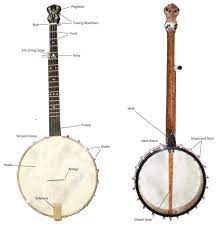Types of 5 String Banjo – Beginner Guide
The 5-string banjo is one of the oldest types of banjos and has long been utilized in various musical genres including Bluegrass, Country, Folk, Jazz and Irish music styles.
The short fifth string known as the drone or thumb string is one of the greatest advantages of these instruments, enabling a unique fingerstyle technique known as “clawhammer banjo style.”
Acoustic
A 5 string banjo is a classic acoustic instrument used in multiple musical genres. They can either have an open back design featuring a drum head as a resonator or closed back bodies similar to an acoustic guitar for increased sound versatility – each variant provides its own distinct tone.
As with any musical instrument, finding the ideal banjo requires finding one to suit your personal playing style and preferences. Some players prioritize durability, ergonomic utility, lightweight construction and intricate designs while others crave something with an exciting sound resonator that pleases their ears.
Electronic
Electronic banjos offer modern players who seek more of an electric sound an ideal way to do so. These instruments essentially consist of acoustic banjos equipped with amplifiers which convert string vibrations to electric signals for use as musical input.
Electric guitars may also feature sound settings that imitate those of other instruments, like guitars or drums, adding another level of character and loudness to performances during live shows. This feature helps musicians stand out during performances.
There are various styles of banjo to select from, so it is essential that you find one that best meets both your needs and budget. Beginners should buy an inexpensive banjo that’s comfortable to play.
Styles
The 5 string banjo is the most prevalent type of banjo and often associated with Bluegrass, Country, Folk and Jazz styles of music. Additionally, fingerstyle players who utilize clawhammer or Scruggs picking techniques frequently utilize it.
There are various styles of 5-string banjos, including open-back and resonator varieties. Resonators produce louder and fuller tones with longer sustain, but weigh more and cost more than their open counterparts.
Many individuals select their ideal banjo style according to personal preferences and playing needs, which is why it is vitally important to conduct thorough research before making a purchase.
Materials
Banjos can be constructed using various materials, from plain metal to nickel plating or coating with nickel, phosphor bronze, stainless steel or nylon.
Phosphor bronze offers a warmer sound while nickel-plated steel and stainless steel produce brighter tones. Nylgut, an artificial imitation of gut, produces tones which sound very close to that of natural strings.
Most banjos feature necks crafted from hardwood such as maple, cherry, oak or koa; some even feature resonators or have an open back construction.
D’Addario offers five string banjo strings that have earned the trust of legendary musicians like Ralph Stanley, Rob McCoury and Ron Block. Their EJ60NY banjo strings feature hexagonal cores crafted from D’Addario’s NY High Carbon Steel for unparalleled strength and pitch stability, offering light playing tension for comfortable feel with bright, projecting tones.
Accessories
Banjos often come equipped with accessories to enhance and simplify playing experience, including extra strings, straps, gig bags, picks and other useful pieces of gear.
On a 5 string banjo you may also find an optional accessory known as a geared fifth string tuner that makes tuning easier – a perfect upgrade that saves both time and effort! This accessory can make tuning much simpler.
There are various kinds of banjos on the market today, but 5-string models remain among the most sought-after choices. Both new and pre-owned versions can be found easily for any musical genre and playing them is extremely straightforward.
